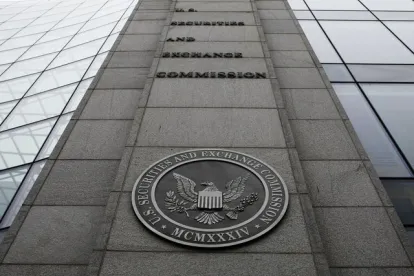Tax-exempt bonds are a critical source of affordable capital for many organizations. At the end of 2017, not-for-profit health care, educational and social service providers rallied together to forestall efforts in Congress to eliminate the ability for these organizations to issue many types of tax-exempt bonds. Fast forward to late 2018, the SEC has dopted rules concerning financial disclosure for tax-exempt bond transactions which will significantly impact the ability of issuers to maintain compliance with public disclosure requirements in the future.
Public vs. Private Offerings
From a public disclosure perspective, there are two kinds of bonds issued in the market today –(1) bonds sold in underwritten public offerings, which are held by individual and/or institutional investors purchased in the public markets after a formal offering involving the delivery of an ‘Official Statement’ and (2) privately or directly placed bonds, sold to one or a small number of bank investors who hold the bonds like a traditional bank loan, but provide the funds at a tax-exempt rate. Directly-placed bonds have become much more common over the last few years (from $66.5 billion at year end 2010 to $190.5 billion by the end of Q1 2018), and have replaced the problematic letter of credit structure previously used by banks in the tax exempt bond market. Though direct placements do not offer the 20-30 year maturities of a public bond issue, many issuers are attracted by the lower cost and flexibility that they provide.
Differing Disclosure Requirements
Disclosure requirements differ significantly between bonds sold publicly and those directly placed with a bank. For direct-placement bonds, disclosure is made directly to the investor/bank and not made publicly. As with a bank loan, the investing bank decides what needs to be disclosed by the issuer and when such disclosure will be required. Not-for-profits still must meet their ‘normal’ public disclosure requirements, including IRS and other regulatory filings.
In a public bond sale, the issuing not-for-profit must make a commitment in what is called a "continuing disclosure agreement" (CDA) to provide to the marketplace annual financial and operational information about the issuer (including audited financial statements) and also agrees to make – on an ongoing basis over the life of the bonds – the "event specific" required disclosures. These events include: principal and interest payment delinquencies; material non-payment related defaults; unscheduled draws on debt service reserves or credit enhancements reflecting financial difficulties; substitution of credit or liquidity providers; adverse tax opinions or other material events affecting the tax status of the security; material modifications to rights of security holders, material bond calls, and tender offers; defeasances; the release, substitution, or sale of property securing repayment of the securities, if material; rating changes; bankruptcy matters, specified M&A transactions, and the appointment of a successor or additional trustee. These disclosure events are disseminated to investors in all cases electronically through the Municipal Securities Rulemaking Board’s Electronic Municipal Market Access (EMMA) website (www.emma.msrb.org).
As noted in our August 22nd newsletter, the SEC recently approved amendments to Exchange Act Rule 15c2-12 (Rule) which sets forth an issuer’s public disclosure requirements. The amendments added two new types of "continuing disclosure" events to the list of material events that must be reported as part of a bond issuer’s ongoing disclosure obligation. The two new types of disclosure events are: (15) the incurrence of a material "financial obligation" of the issuer, and (16) any default, acceleration, termination or modification under the terms of a financial obligation, any of which "reflect financial difficulties" of the issuer.
Financial Obligation Disclosure – What Needs to be Disclosed?
The amendments to Rule 15c2-12 raise a number of important compliance issues, including:
-
Whether and how much of the new text set forth in the Rule (and the SEC’s adopting release guidance) for events (15) and (16) to include in future CDAs.
-
The term "debt obligation" (part of the "financial obligation" definition) is not defined in the Rule, but guidance is provided in the Adopting Release (e.g., leases operating as vehicles to borrow money are included within the term "debt obligation").
-
The correct meaning of the term "material" as used in event (15), which the SEC confirmed in the Adopting Release is to be applied using existing Supreme Court standards (TSC v. Northway, whether information would be
-
important to the total mix of information made available to the reasonable investor).
-
The need to implement new (or improve existing) disclosure controls and procedures of the issuer, with respect to events that could trigger disclosure under the two new event items.
-
Disclosure "calls" under the new (15) and (16) events are not clearly defined, and will require the considered judgment of issuers, their officers, and likely, outside counsel and other advisors, all within the ten business day time frame provided in the Rule.
Effective Date and Applicability
The SEC’s Rule amendments will become effective on February 27, 2019. As a result, every public bond issue issued after that date will be subject to the Rule’s expanded reporting requirements. In addition, for any public bond offering closing between now and February 27, 2019, it is possible the underwriter may ask for voluntary compliance with the revised rule by adding these new disclosure items to your CDA. Certainly as the effective date draws closer, underwriters, or perhaps issuing authorities, will likely feel more inclined to request advance compliance. If you are looking to issue bonds in the coming few months, you should check with your underwriter about these compliance issues with sufficient time before your offering gets underway.
What about Existing Bond Deals?
In its adopting release adding the new types of disclosure events, the SEC explained that "[t]he amendments to Rule 15c2-12 will impact only those [CDAs] entered into in connection with offerings that occur on or after [February 27, 2019]." The SEC also noted that "[CDAs] entered into prior to the compliance date would not be required to reflect changes made to the Rule by such amendments."
Simple enough, but how will bond trustees, state financing authorities, and other market participants interpret and apply the contractual language of existing CDAs in light of the amendments to the Rule? Can the language of these agreements be read to include the new required disclosures even if the SEC says that the issuer does not have to comply?
We’ve reviewed a number of continuing disclosure agreements entered into during the period 2005-2016, and found that typically the CDAs:
-
define the "Rule" as "Rule 15c2-12(b)(5) adopted by the [SEC] under the Exchange Act of 1934, as the same may be amended from time to time;"
-
provide that the CDA is "executed and delivered" for the benefit of the Bondholders and is intended to "assist the underwriters in complying with the Rule;"
-
include a list of "Listed Events" that incorporate the current list of disclosure events (currently 14 separate events or circumstances included in the Rule); but
-
do not specifically provide that the list of Listed Events shall be deemed to include any new disclosure items added to the Rule by SEC rulemaking of otherwise.
Given that (1) the CDAs we read do not sweep in any new disclosure items and (2) the amended Rule specifically excludes pre-February 27, 2019 bond issuances from compliance, it seems to us that this expanded reporting should not be required. If you have a CDA in place currently, you should review the language with counsel and evaluate your entity’s disclosure requirements.




 />i
/>i

